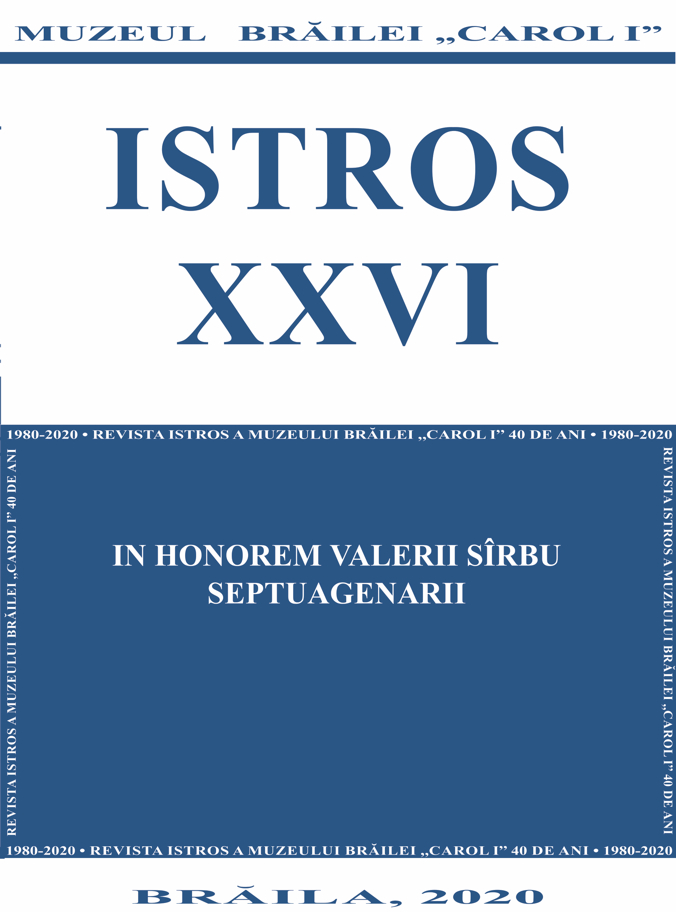Semnele monetare din vestul Pontului Euxin. Noi evidențe prezente în documentația numismatică a ultimului deceniu
Monetary Signs West of Pontos Euxenios. New Records Present in the Numismatic Documentation of the Last Decade
Author(s): Gabriel TalmațchiSubject(s): History, Archaeology, Ancient World
Published by: EDITURA ISTROS A MUZEULUI BRĂILEI „CAROL I”
Keywords: monetary signs; Black Sea; Dobruja; Istros; spheres of exchange; trade; interdisciplinary approach;
Summary/Abstract: The intensification of research in the last decade on the discoveries in the West Pontic Dobruja area, within the general theme of the phenomenon of monetary signs, has created the premises for deepening some long-pending issues and the emergence of other directions for the environment of local populations. At the same time, a periodic synthesis of new theories and discoveries, respectively of the conclusions that emerge accordingly, is always welcome. On the one hand, the latest discoveries of monetary signs from the West-Pontic area from Istros, Tomis, the Histrian chora and the settlements of the native population beyond the territory of influence are reviewed. On the other hand, the new theories on the phenomenon of monetary signs are approached and the results of interdisciplinary analyses performed on several hundred monetary signs in the category of arrowheads / bay leaves / olive leaves or wheat grains from Dobruja treasures are presented. The conclusions, Conclusions, gathered under a last subchapter containing details on the characteristics of the phenomenon of monetary signs, underline their character as a standard of exchange as it results from their use in local and regional Greek-local trade. Monetary signs were not actually coins, they never met all the characteristics and functions that the currency had.Monetary signs are part of the category of special Greek goods and have had a strong influence from the Greek to the local world, in the context of economic and trade. Beyond the culture, beliefs and ideology of the natives. Regardless of their mode of manifestation, initially as a religious symbol (in the Greek environment, through pieces transformed by cutting the tip and filling the sleeve with lead) and later as a commercial symbol (in the Greek-indigenous and local environments, through specially cast pieces exchange), monetary signs from the category of those specially cast for exchange are present in a multitude of archaeological discoveries made mainly outside the area of the early settlement of Istros, in the choir and even further, in fortified and open residential centers of the local population. They represent from a chronological,typological and functional point of view a special chapter of general numismatics specific to the Greek world from the 6th-5th centuries B.C., especially of the western basin of Pontos Euxeinos, with exceptional manifestations in relation to current theories of pre-monetary and monetary mechanisms.
Journal: ISTROS
- Issue Year: XXVI/2020
- Issue No: XXVI
- Page Range: 201-240
- Page Count: 40
- Language: English, Romanian
- Content File-PDF

